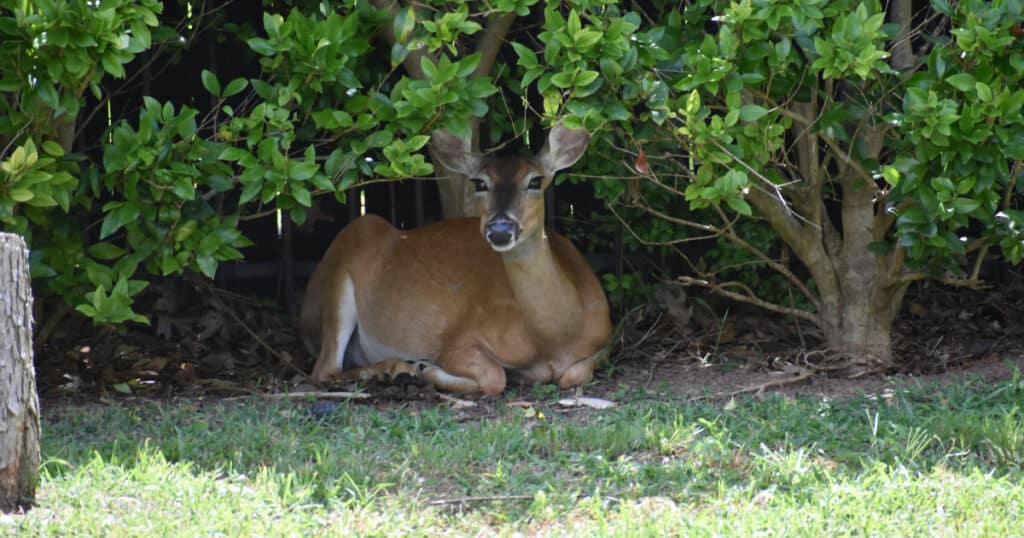Seeing deer is a common occurrence in modern suburban life. However, seeing one on the road is one thing, but why do deer sleep in your yard?
Deer sleeping in backyards is increasing as animals become more confident in residential locations. From a distance a deer in your yard is a wonderful sight, standing proudly in the glistening sunrise. In reality, there are some issues. Deer are not gentle animals and can be dangerous to both you and your yard.
As people spread out into increasingly into natural spaces, humans are integrating with areas inhabited by wild animals. If we move one way, wildlife will move into our urban areas. Whether it is bears, raccoons, or coyotes, there is constant evidence of this happening. Deer moving into our backyards is just one example.
So, Why Do Deer Sleep in My Yard?
Food is the biggest reason why any wild animal sets up home in our towns and cities. Having a regular source of food is something all wildlife strive for. Deer are not the roaming animals many presume them to be. Instead, most species will stay within 100 yards of food sources and bedding locations, and this is why deer sleep in your yard.
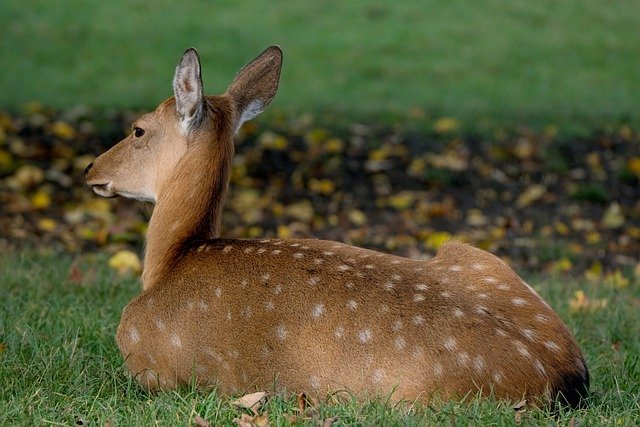
Deer like to sleep in select bedding areas where they are protected. Deer are likely to stay and return to the same spot day after day and night after night. Especially, if they find a location that serves their food, bedding, and security requirements. Yards often fulfill all these requirements, creating the perfect environment for deer to call home.
Deer Can Avoid Threats in Your Yard
In suburban areas, deer face fewer threats from their natural predators like wolves and cougars, which have also decreased in the wild. As a result, deer populations have exploded because deer populations are not kept in check through natural means.
Animals are forced to find refuge in new locations, including areas where humans live.
Most types of deer are also fringe forest animals, meaning they won’t live deep into forests where food can be scarce. Our urban areas have numerous fringe forest-like locations within them. Urban sprawls naturally break up forests, providing a handy habitat for deer.
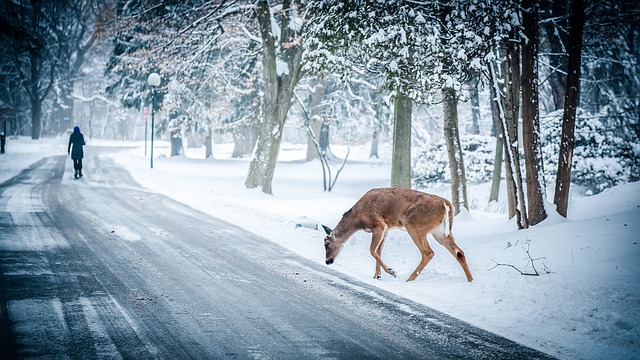
Deer can also avoid their biggest threat: humans. Hunting is prohibited within suburban areas. Deer can live freely without the threat of being hunted by predators or man. Cars are the biggest risk to deer in the suburbs.
Habits of Deer: Why They Stay in Your Yard
Deer have regular behavior patterns that determine how and why they prefer your yard.
Deer can also be aggressive and dangerous. This is a risk if you attempt to get too close to them, especially if you surprise them when they are sleeping or eating.
Sleep Habits
Deer sleep in several different ways. Some may look like they are not really sleeping. For example, deer can sleep standing up and some will leave their eyes open.
This may seem bizarre to us, but deer are prey animals and under constant threat. That does not mean deer cannot kick back and relax… some species will lie down and to the observer may even look like they are dead.
Food
Food is a driving force behind the life of deer, whether female or male. All deer like to stay close to food. If they find a regular replenishing source, like your garden, they will never roam far from it. They may even stay throughout their whole life.
Bucks of some species will roam further. Their mating ranges will be linked to females, who will stay in proximity to food sources.
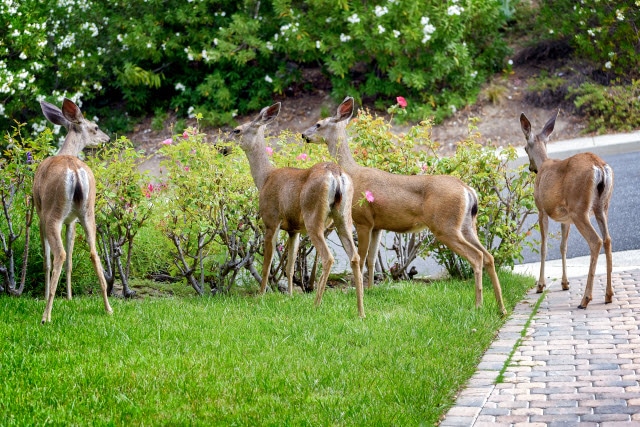
A garden is like a candy store for a deer with an unlimited supply of free candy. Deer can cause plenty of damage to your garden, munching your hydrangeas, roses, and other plants. If there are multiple animals, they may destroy it completely, which is why many suburban homeowners consider deer pests.
Risks of Living With Deer
You may take a live-and-let-live approach and allow deer to continue to sleep in your yard. Your ability to co-exist with a regular deer visitor will depend on your location, the size of your yard, and what you use your garden for.
However, there are some clear risks associated with deer being in your yard.
Deer Carry Ticks
Deer can carry ticks, which are a huge cause Lyme disease. Specificlaly, deer carry the black-legged tick that prefers the blood of deer. Although they will attach to humans, cats, and dogs, as well, spreading Lyme Disease with them.
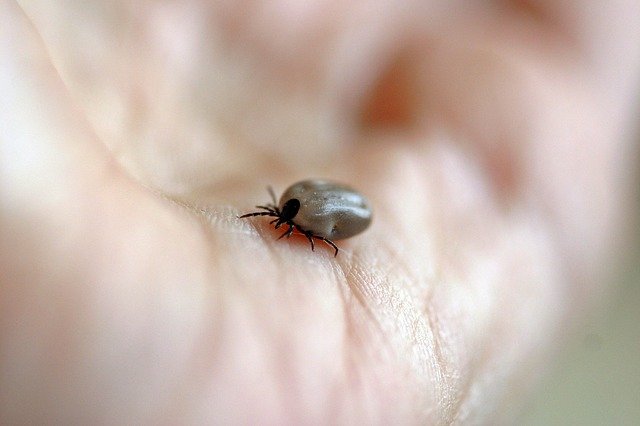
Lyme Disease is one of the most confusing diseases people can get and remains with infected people for life. While it can be fatal. It will mostly cause a range of changing symptoms that make it hard to diagnose. Some of the classic symptoms of the disease include:
- Aching muscles
- Joint pains
- Constant fatigue
- Fever
- Headaches
Lyme Disease is a major threat in the United States and is growing each year because of exploding deer populations and more deer encroaching on our urban spaces. Because symptoms are hard to diagnose, the number of people suffering this disease is unknown and could be as many as one million per year.
Final Thoughts
Having deer sleep in your yard can be problematic, though it depends on your yard and how you use it. If you have kids or dogs, you may want to keep deer out of your yard.
You can deter deer from sleeping in your yard by growing plants they don’t like. Though there are commercial or homemade deer repellent you can use as well.
If you don’t use your yard extensively, then having deer sleep in your yard won’t pose too much risk to you and can provide them a safe haven.

